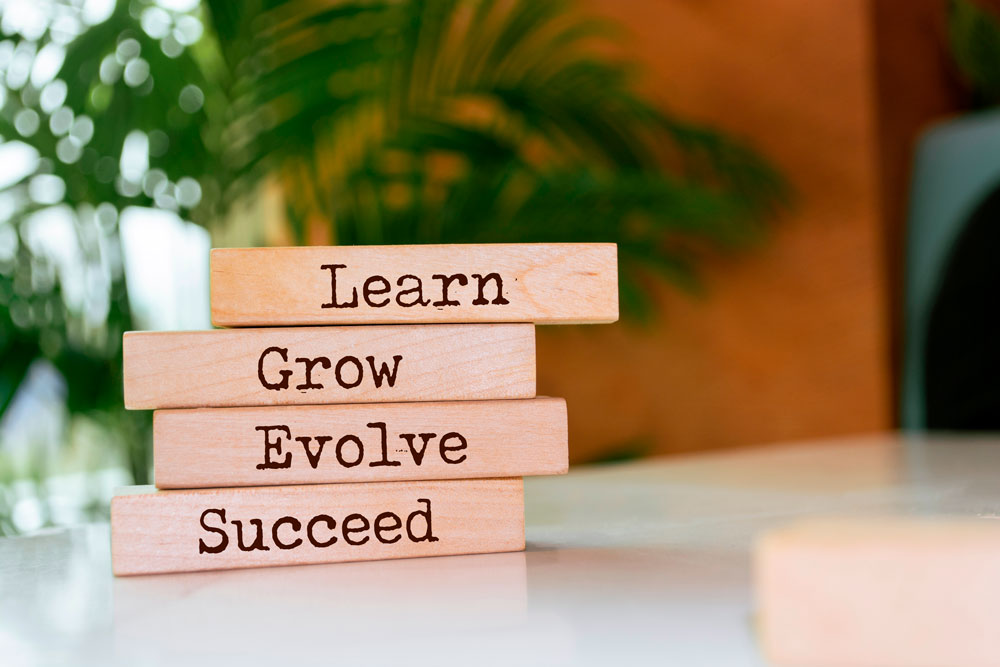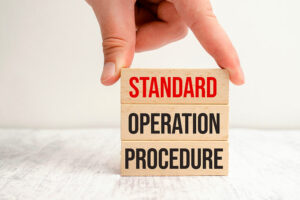In today’s post, Paul Azad, the founder of ServiceTree talks about team culture, and how we can continue to grow.
As a kid, when we grow up, we get told, just keep trying, just keep doing it, you’ll get better, you’ll get better, just don’t give up. And for a lot of things in life, it’s the case, for example, sports, if you’re trying to play soccer, you just got to keep practicing to get better. But the thing with it is that, when we’re practicing, if we’re just practicing on our own, there’s a good chance, we aren’t going to get a lot better. And if we are, it’s by accident, because we actually are not going to get any better by doing the same thing over and over again, when we get somebody external, a coach helping us, although it might feel like we’re doing the same thing, and we’re getting a different result, it’s very, very far from the truth.
It’s always a continual evolution of growth.
What I’m trying to say is, if we do what we did yesterday, we’re going to expect that we’re gonna get the same results tomorrow. So unless you’re really ecstatic, you’re excited, you’re in love with the results you got yesterday. And when I say yesterday, I don’t just mean the one day, in general, last week, or last month; unless you’re super excited about that, then do not do that same thing, and expect to get a different result tomorrow. In any business, it’s always a continual evolution of growth.
When I talk about growth, I’m not just talking about financial growth or customer growth, I’m talking about growing as an organization, maturing as an organization. Getting better at what we do. When we do that, the unfortunate thing is that most times in an organization, we learn what we learn from inside. And so, a lot of what we do is going to be what we did yesterday, and we’re hoping to get different results tomorrow. So it’s really, really challenging.
Now, I’m somebody that likes to look outside, for inspiration. When I say outside, I don’t mean outdoors, I’m talking about outside people. My business coaches always give me guidance outside of my business or businesses to help me look and identify what we could try differently.
The cost of hiring new staff.
In my MSP, there were a few years we tried a lot of different things, I would say around 2014 to 2016. We went through a few years where we tried to do different things, we looked at every time we onboard new customers, and every time we onboard a new staff, we constantly had the pain. And I’m pretty sure most MSPs will acknowledge that this is the pain that we all feel. As we hire more staff or onboarding new customers, we have to hire new staff, and then we have to train. And then we have to check out the documentation. It’s a very slow cycle. We onboard a new team member, it’s a good three months before that team member is at full speed; you might not want to admit it, but there’s a good chance, a very high possibility that your team member, that person you hired isn’t going to be able to hold their own worth of work for about three months.
if I talk about the average wage, the average burn rate of tech is $3 an hour, which is $60,000 a year, which puts a monetary value at $15,000. It’s going to cost the business $15,000, whether that resource before they’re able to achieve some growth of the business.
Now, the cost of that resource is not the only cause, there’s the management overhead, and there are the other resources that you’ve utilized to train this person. It’s not $15,000 is more than likely to be at 20 $25,000.
When we went through our business and looked at this, that was actually a big driving point of building service trade because we kept feeling like we were in groundhog while other people talk about the hamster wheel going round and round and round. And what I didn’t realize at the time was exactly that. We were doing the same thing as we did yesterday and we’re hoping for different results tomorrow. And every time it happened, we’re like – Okay, this will be our last time, we got to look at a new way.- But we never let that happen. We always were so busy, so involved with so many other things that we didn’t think that was important. What ended up happening was over time, while we just kept doing the same thing we did yesterday, and we’re getting the same results tomorrow, it kept happening, we kept having the same energy in the effort put into the same onboarding process, the same recruitment process, and it wasn’t working bad people were getting, you know, bad onboarding, the bad customers, but it was a lot of effort. Was only when we stopped and said, you know what? We have to spend some time outside of the business.
And made a day and weekly think that one day a week, I was not inside the business, I was not taking calls, I was not contacted by my team unless was an emergency, which they shouldn’t be, and I was able to focus on the business looking outside. I spent those times in cafes and coffee shops and looking around at other people, other businesses, how the coffee shop brand, getting inspiration from different places, and looking at different industries and how they did what they did. I definitely took a lot of that onboard, and a lot of what we ended up doing over the next couple of years actually came from those times that I spent outside of the business.
If we keep doing what we did yesterday, we’ll get the same results tomorrow.
In between all that we tried different things, we tried working with a balanced scorecard, It’s a framework that helps organizations see the different pillars and what’s important to the organization. We looked at lean principles, six Sigma, we tried putting our teams into pods, we tried a lot of different things, and each one of those things was a challenge. And it was a learning curve. But we needed to do that because we wouldn’t have been in the position I was in three, four years later, if we kept doing what we’re doing for the last 10, 12, 14 years beforehand. What we were able to learn was there was a very different way of doing things. But it all came back around the same thing, If we kept doing what we did what we did the day before, we’re going to get the same exact result, and our person was not satisfied with that.
Now, I know that for a lot of business owners, there’d be mornings, I would wake up and think to myself, Why am I doing this? What is this? Is this the future? And it wasn’t a bad future, it wasn’t a bad day, but it was sort of a – No, maybe I’m just challenging myself more than others do.- For me, I wanted to see the difference, more extravagant, better, bigger, and more successful. And it wasn’t something simple, but it was definitely through that whole process, that if we do what we did yesterday, we’ll get the same results tomorrow. And that was really the big start for us, the kickstart or the second round of what my MSP was all about, and what ended up driving, us to build so straight. And it wasn’t around the time, it wasn’t around building a new tool. It definitely wasn’t around building a tool to sell, it was never that. It was always around, if we do what we did yesterday, we’re gonna get the same results tomorrow. How do we make this better? And it was that learning process, it was going through that journey, that evolution, and learning about what we were doing. And that’s only the way we came out that we start to realize what we’re doing.
What we do today is quite different from what we did five years ago. I don’t believe that our profit margin, before I start my MSP down, and we focused on ServiceTree, I don’t believe my profit margins would be anywhere near what there were if we hadn’t changed. And the reason why I know that well is that my net profits were very similar for 10, 12, and 14 years beforehand. And they weren’t bad, but they weren’t super awesome. They were just in the typical MSP range. For me, that’s not what I wanted to do. I wanted to deliver greatness, to be able to chase some of that stuff. It wasn’t about making a lot of money to have a house in the Bahamas and all that kind of stuff. I wanted to be able to build a second business, to build something that’s bigger than me. And for that to be achievable, we had to do that. We looked at it and it was great.
Think outside the square.
It’s a challenge but think outside the square. Don’t fall into the trap of copying someone else. A lot of people look at rich people and what they’re doing, and think that they’ve got to do the same thing. But you got to understand that what they’re doing today is not what they did to build their brand to build their business to be where they are today. So if you look at any of the big brands, and who created them, what they did in the early days, you’ll see that they challenge themselves all the time. Apple was Steve Jobs, Google, Tesla, and Amazon, they challenge themselves day and day. They’re all very much brands that challenge themselves and challenge the status quo. challenge what they were doing. That’s how greatness comes. I don’t think greatness comes by luck, the chances of becoming successful and being very wealthy by luck, there’s more chance you winning the lotto.
Looking at what you’re doing, look at what you did yesterday, look at how you can tweak it, and look at what success looks like today. But also look at what you want success to look like tomorrow in the future and work towards that. And as I mentioned, if you don’t have a business coach or you don’t have a peer group or something, definitely they’re really, really useful. It’s not about comparing yourself to the Joneses. It’s more around looking at what others are doing and learning from them to do better and to do differently.





